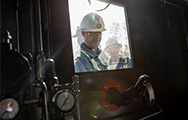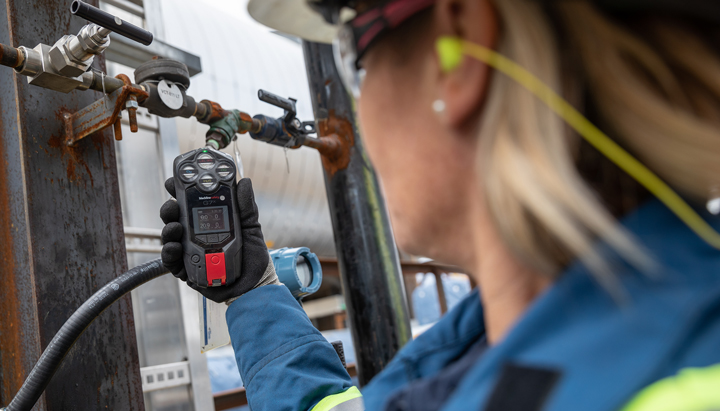Process safety
Process safety management is about keeping our hazardous substances in pipes, tanks and vessels so they do not cause harm to people or the environment.
It starts with designing and building projects and is implemented throughout the life cycle of the facilities to ensure they are operated safely, well maintained and regularly inspected.
Visit www.shell.com/process-safety for more on our approach to process safety.
Improving risk management
Our global standards and operating procedures define the controls and physical barriers we believe are necessary to prevent incidents.
We regularly inspect, test and maintain these barriers to ensure they meet our standards. In the event of a loss of containment such as a spill or a leak, we deploy independent recovery measures to prevent the release from becoming catastrophic.
We refer to this system of barriers and recovery measures as a bow-tie model, which visually represents a system where process safety hazards are managed through prevention and response barriers.
Risk management approach
In 2019, leaders throughout Shell continued to work with their teams to develop a better shared understanding of process safety challenges and behaviours, and to jointly design improvements. We have also been shifting our focus to leading indicators of process safety to understand and measure success, rather than focusing just on lagging indicators, such as the absence of safety incidents.
Process safety fundamentals
Since 2016, we have strengthened barriers that involve critical safety tasks carried out by frontline staff by embedding a set of 10 process safety fundamentals across Shell. They provide clear guidelines for good operating practice to prevent unplanned releases of hazardous materials. We encourage employees and contractors to use them in daily conversations to identify safety dilemmas, so they can be resolved.
Safer wells
An example of a safety initiative with a strong process safety element is the Assist and Assure programme, which aims to ensure that leading safety indicators are front of mind for our global wells team. The programme encourages employees and contractors to take steps such as scheduling more in-depth discussions before, during and after tasks and regularly conducting assurance to identify and close safety gaps.
The Shell-operated QGC project in Australia, which produces natural gas for domestic and international markets, improved its safety performance, recording a 40% decrease in total recordable case frequency since the programme was introduced in 2018. QGC focused on safe drilling, well completion and intervention activities.
The lessons of the Assist and Assure programme are being shared across different businesses in Shell.
Process safety performance
In line with industry standards, we measure and report process safety incidents according to significance, with Tier 1 as the most significant.
The number of Tier 1 and 2 operational process safety events increased from 121 in 2018 to 130 in 2019, of which 41 were Tier 1 and 89 were Tier 2. For comparison, there were 35 Tier 1 and 86 Tier 2 operational process safety events in 2018.
In 2019, the most significant incident related to process safety was an explosion and subsequent fire at the Shell Scotford Complex in Canada. The incident was caused by a sudden rise in temperature within a heater as we were preparing to shut down a section of the facility. New heater protection controls were installed to help prevent this type of incident occurring again. There were no injuries or health implications related to the incident.
Tier 1+2 operational process safety events
excluding sabotage
Process safety events related to sabotage and theft in Nigeria are recorded separately. There were nine Tier 1 events in 2019, the same as in 2018.
Visit www.shell.com/safety for more on Shell and safety.
 Climate change
Climate change
 Sustainable development goals
Sustainable development goals
 Safety
Safety
 About our data
About our data

